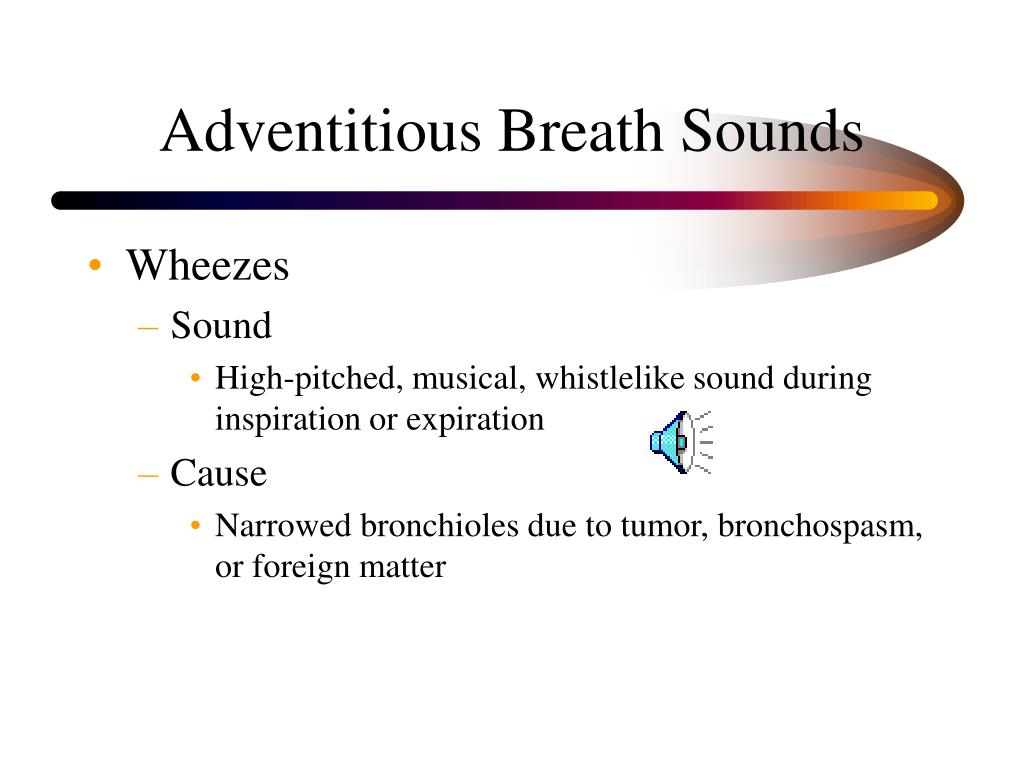

Hypercapnia with mixed acid base disorder.Acquired central alveolar hypoventilation.respiratory failure of newborn ( P28.5).respiratory distress syndrome of newborn ( P22.-).respiratory arrest of newborn ( P28.81).acute respiratory distress syndrome ( J80).The intensity and character of breath sounds help determine the. See also: rale, rhonchus, crackle, crepitation, wheeze, rub, crunch. Abnormal, or adventitious, sounds are classified as crackles, wheezes, stertor, and stridor. (f) certain symptoms, for which supplementary information is provided, that represent important problems in medical care in their own right. adventitious breath sounds: sounds heard on auscultation of abnormal lungs.(e) cases in which a more precise diagnosis was not available for any other reason.(d) cases referred elsewhere for investigation or treatment before the diagnosis was made.(c) provisional diagnosis in a patient who failed to return for further investigation or care.(b) signs or symptoms existing at the time of initial encounter that proved to be transient and whose causes could not be determined.(a) cases for which no more specific diagnosis can be made even after all the facts bearing on the case have been investigated adventitious lung sounds: ( advn-tishs lng sowndz ) Breath sounds that are not normally heard or are heard in an inappropriate place that fall into one of two categories: (1) continuous: musical sounds with a persistent pitch (e.g., wheezes, rhonchi) (2) discontinuous: nonmusical, intermittent, crackling, or bubbling sounds (rales).The conditions and signs or symptoms included in categories R00- R94 consist of:.8, are generally provided for other relevant symptoms that cannot be allocated elsewhere in the classification.

The Alphabetical Index should be consulted to determine which symptoms and signs are to be allocated here and which to other chapters.

Practically all categories in the chapter could be designated 'not otherwise specified', 'unknown etiology' or 'transient'. In general, categories in this chapter include the less well-defined conditions and symptoms that, without the necessary study of the case to establish a final diagnosis, point perhaps equally to two or more diseases or to two or more systems of the body. Signs and symptoms that point rather definitely to a given diagnosis have been assigned to a category in other chapters of the classification.This chapter includes symptoms, signs, abnormal results of clinical or other investigative procedures, and ill-defined conditions regarding which no diagnosis classifiable elsewhere is recorded.


 0 kommentar(er)
0 kommentar(er)
